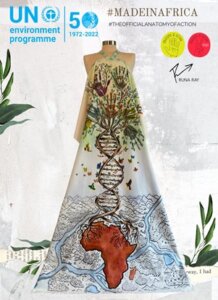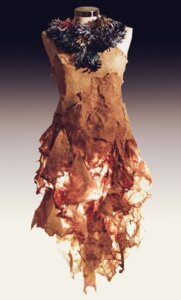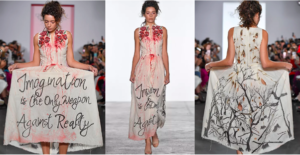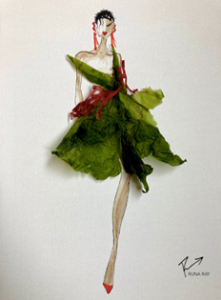Following the heels of NY Fashion Week and Met Gala, we look at the sustainability of the $1.5 trillion Fashion Industry and related green commitments to the planet.
“Obroni Wawu” – literally translating to “Dead white men’s clothing” is a common term in Accra, the capital of Ghana. What once was a goodwill donation is now a severe environmental concern in several parts of the continent. Accra, alone, receives ~15 million unwanted fashion items per week, and at least 40% of them get dumped into the landfills.
We are buying more clothes but wearing them less often. Roughly around 80-150 billion garments are produced each year, with the major manufacturing hubs in the Global South. The rise of the middle-income class globally, and constant scrutiny by social media in the growing influencer culture, is defining our consumption patterns. A 2017 survey by Hubbub finds that 41 per cent of 18- to 25-year-olds feel pressured to wear a different outfit each time they step out.
This inventory overflow to create the 52 “micro-seasons” each year in the name of “fast fashion” comes with a price. And the environment is paying that cost. According to UNEP, the fashion industry is the second-biggest consumer of water and is responsible for 10 per cent of global carbon emissions. Almost 85 per cent of textiles go to dump sites each year, and tons of microfibres with it.
Luckily, at the hands of a new generation of conscious designers, sustainability in the fashion industry is finding its panache. These designers are experimenting and creating their lines with plant-based materials, waste and deadstock fabrics, no-emissions stitching techniques, and making a strong statement that the future of fashion can be sustainable.

“The DNA tree reminds us that Homo sapiens originally evolved in Africa. As the tree extends its intertwined limbs, the myriad branches reach out with open hands, illustrating that we can only succeed if we work together and embrace nature” – Runa Ray
Runa Ray, a pathbreaking fashion designer and environmental activist, has used a regenerative “Blue-Green Algae” textile created entirely of algae collected from the beaches of Northern California. Runa also uses ancient art techniques like Suminagashi (the “art of floating inks”) and Origami (the “art of paper folding”) to design zero-waste garments and reduced use of water. Through the stimulation and development of Nature-based Solutions in her designs, such as chlorophyll printing from Bougainvillea or Rose petals, she has made herself a role model in the sustainability conversation of the fashion industry. She has been selected for the UNFCCC Race to Zero campaign to promote fashion in sustainability at COP26 in Glasgow.

From AOC’s “Tax the Rich” gown at the Met Gala to K-pop’s runway debut at NYFW, the extravagant fashion events got all the desired attention during the last few months. However, the environmental footprints of fashion week, be it in Paris, New York, Milan or London, are also getting equal attention as its haute couture. As per a report by Ordre, fashion buyers and designers contribute 241,000 tons of CO2 emissions annually by attending these events.
With the COVID-19 pandemic locking the world indoors, fashion events are leaning towards a digital makeover. In Paris, The Fédération de la Haute Couture et de la Mode, hosted its first all-digital fashion week this year. London Fashion Week partnered with Joor – a digital platform, to create a virtual showroom experience.
Runa mentions that a hybrid model of physical and digital will be necessary. The fashion industry employs over 300 million people across the value chain. Models, photographers, stylists, and specialized units rely on it for their livelihoods. The events are also a creative outlet for open dialogues across several issues. Going local in hiring models, designers, inviting participants, and selecting venues is an excellent first step to reducing these events’ emissions.

Despite all the efforts, transparency in the production and procurement processes of the fashion industry remains still too low. The Fashion Transparency Index 2021 gave an overall score of 23% to 250 of the world’s largest fashion brands of retailers. The report mentions that most brands disclose the policies, commitments, processes on human rights and environmental topics, but not the results, outcomes, and impacts of their efforts. Most opaque is the transparency for the material, especially with environmental issues like microplastics.

But the future looks optimistic. Now more than ever, stakeholders, especially the millennials and Gen-Z consumers, demand more transparency and want to know their products’ source. A report by McKinsey and Business of Fashion states that 52% of millennials and 37% of Gen-Z research background information before making a purchase. This is pushing the brands and industry to do better.
Apart from radical transparency in manufacturing, a small but growing base, including the high brands like Burberry and Gucci, is adopting carbon negative or neutral mandates. Each day, some or the other innovations are happening to keep the planet healthy and investors happy. Fashion schools, for instance, are creating new courses and hiring experts, to teach the students eco-friendly technologies, plant-based materials, circular design, and processes.
As consumers, we all should take more time to reflect and re-think our purchases. Ask more questions – What is the source of this fabric? Is the brand committed to ethical standards? What happens to the clothes we discard? And most importantly, do I really need to buy this?



